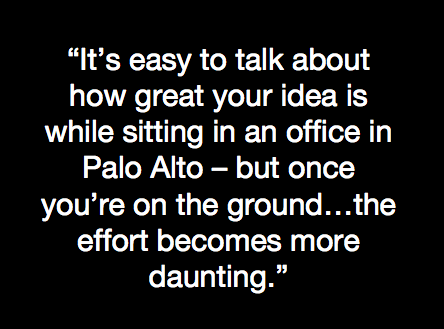This is an article written by Claire Tramm and Matt Gee, CEO and CTO of Effortless Energy.
—-
Home energy efficiency ought to be a no-brainer. Smart home upgrades improve home comfort, increase home value by up to 14%, improve air quality and health, and pay for themselves through the energy cost savings they create. Yet, despite the clear benefits both to individual homeowners and society, investment in home energy efficiency remains frustratingly low.
Why aren’t homeowners investing in energy efficiency? Because energy efficiency finance is broken. Most homeowners can’t afford the sizable upfront costs of home efficiency, and they are reluctant to use available forms of efficiency finance. This is because all of the existing financing options, from energy efficient mortgages to energy efficiency loans, share the same three problems:
- They stay with the homeowner, not the home.
- They put the complicated burden of assessing the energy savings potential of an investment on the homeowner.
- Repayment is independent of actual savings.
With such a complicated and risky value proposition, it’s clear why homeowners are reluctant to take out a loan to pay for insulation, air sealing, or energy efficient lighting and appliances. What is needed here is a financial innovation that offers customers a low-risk value proposition, while also offering predictable, attractive returns to investors.
Effortless Energy is unlocking the potential of home energy efficiency through an innovative financing model called a Home Energy Efficiency Services Agreement (HESA). The HESA uses the actual, realized energy savings of the homeowner to pay back investors. This way of financing energy retrofits solves all the problems endemic to energy efficiency finance.
- The HESA stays with the home, not the homeowner.
- The burden of correctly calculating expected energy savings falls on the company offering the HESA, not the homeowner.
- The homeowner is guaranteed to pay lower utility bills than they would have without the HESA investment, because repayment only comes out of the energy savings.
To finance Home Energy Efficiency Service Agreements, Effortless Energy has created a novel fund structure called a Community Energy Efficiency Fund (CEEF) that allows investors to buy into the pooled returns from a collection of HESAs. The CEEF is a credit-remote entity, but Effortless Energy sponsors and manages the fund.
Effortless Energy protects against delinquency and default by screening on credit worthiness of homeowners as well as attaching payments to the utility bill in states that allow it, which enables the power to be shut off if payment is not received. Additionally, a variety of state, local, and foundation PRI programs can serve as a loan-loss reserve, giving private and institutional investors the peace of mind they need to invest in a new financial product.
We’re currently creating our first two CEEFs for homes in the greater Chicago area. We’re thrilled that our first fund – CEEF1 – is being raised in partnership with LendSquare, a crowd-funded debt platform, and will be the world’s first crowd-funded energy efficiency fund.
The home energy efficiency market is ripe for financial innovation. States are passing new legislation that allows third-party lenders to collect payments through the utility bills, reducing collection costs and default risk. Utilities are rolling out smart meter technologies that increase customer awareness of energy use and allow for more accurate baselining, modeling, and verification of energy savings. Federal, state, and local agencies are opening data that allows for smarter targeting and screening of inefficient homes. All of these opportunities combine to make financial innovation in energy efficiency eminently doable.
Surprisingly, investors haven’t focused much of their attention on home energy efficiency. They should. Estimated at $230 billion, the market for cost effective energy efficiency investment is one of the country’s largest untapped markets for sustainable investment. Community Energy Efficiency Funds that finance Home Energy Service Agreements give private and institutional investors the opportunity to add energy efficiency investments to their portfolio in a big way.


